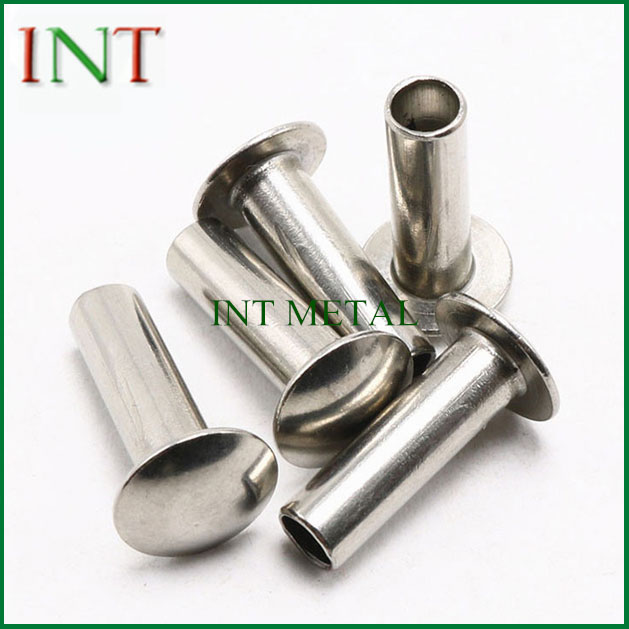Reinforcing Connections: The Strength and Durability of Hollow Steel Rivets
2024-05-10
In the realm of industrial and manufacturing processes, the integrity of assembled structures or components is paramount. Hollow steel rivets stand as stalwart guardians, reinforcing connections with their robust construction and unwavering reliability. Let's delve into how these unassuming components contribute to the overall strength and durability of assembled structures or components, ensuring resilience in the face of demanding conditions.
Forming Solid Bonds:
At the heart of their functionality lies the ability of hollow steel rivets to form solid bonds between materials. During installation, the rivet is inserted through pre-drilled holes in the components to be joined. As the mandrel is driven into the rivet body, it expands, causing the rivet to deform and create a tight, secure joint. This riveting process results in a permanent connection that distributes loads evenly across the joint, minimizing stress concentrations and enhancing structural integrity.
Even Load Distribution:
One of the key advantages of hollow steel rivets is their ability to distribute loads evenly across the joint. Unlike traditional fasteners such as screws or bolts, which can create localized stress concentrations, rivets spread the load over a larger area, reducing the risk of joint failure. This even distribution of forces helps to maintain the structural stability of assembled structures or components, ensuring long-term reliability under static and dynamic loads.
Resisting Shear and Tensile Forces:
Hollow steel rivets excel in resisting both shear and tensile forces, making them ideal for applications where joints are subjected to bending, twisting, or pulling. The cylindrical shape of the rivet body provides inherent strength against shear loads, while the head design enhances resistance to tensile forces. This combination of attributes allows hollow steel rivets to withstand a wide range of mechanical stresses, ensuring the integrity of assembled structures or components in challenging environments.
Enhancing Fatigue Resistance:
In applications where cyclic loading or vibration is present, fatigue failure can pose a significant threat to the longevity of assembled structures or components. Hollow steel rivets offer superior fatigue resistance compared to other fastening methods, thanks to their inherent ductility and ability to absorb energy under cyclic loading conditions. This enhanced fatigue resistance helps to prolong the service life of riveted joints, reducing maintenance requirements and downtime in industrial and manufacturing operations.
Providing Corrosion Protection:
Corrosion is a common enemy of metal structures, particularly in outdoor or marine environments where exposure to moisture, salt, and chemicals is prevalent. Hollow steel rivets, typically made from corrosion-resistant steel alloys, offer excellent protection against rust and degradation. Additionally, specialized coatings or surface treatments can be applied to further enhance corrosion resistance, ensuring the long-term durability of riveted joints in harsh operating conditions.
Facilitating Assembly Efficiency:
Beyond their inherent strength and durability, hollow steel rivets also contribute to the efficiency of assembly processes. Their simple design and straightforward installation make them easy to use, reducing labor costs and assembly time. Furthermore, rivets can be installed without access to the backside of the workpiece, simplifying assembly in tight spaces or complex configurations. This efficiency translates into cost savings and streamlined production workflows for manufacturers across various industries.
In conclusion, hollow steel rivets play a vital role in enhancing the overall strength and durability of assembled structures or components in industrial and manufacturing settings. Through their ability to form solid bonds, distribute loads evenly, resist mechanical stresses, enhance fatigue resistance, provide corrosion protection, and facilitate efficient assembly, these unassuming fasteners ensure the resilience and longevity of countless products and structures that shape our world.



